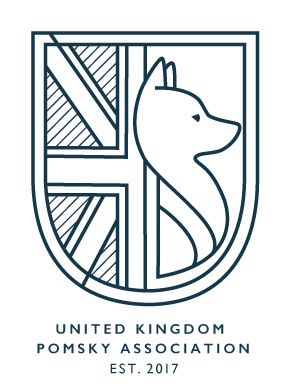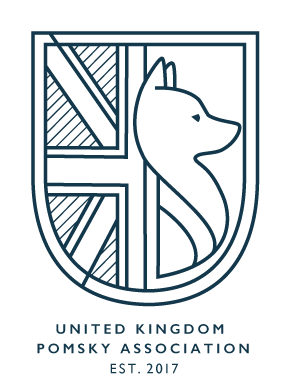Welcome to the UKPA
United Kingdom Pomsky Association
Why UKPA?
Est in 2017 the United Kingdom Pomsky Association (UKPA) was set up to guide & educate breeders in the breeds development. Its main purpose is to ensure that standards are in place both in the quality of breeders programs and for the Pomskies development.
This development looks at several aspects:
Hereditary Health Issues
Genetic Diversity
Conformation to breed standard
Planning for the future.
Our main focus is currently breeder education and breed development.
Breeder Education
The UKPA provides ongoing breeder education to its breeder members ensuring ongoing learning & development within their programs. We are here to support our breeders, assisting them to obtain the best from their investment in the breeds future.
Code of Ethics
The Code of Ethics our breeders sign up to prior to gaining membership ensures their Pomsky breeding program meets minimum standards of excellence.
Breed Development
We look to the future and what our breeders need to do, so they reach the breeding goals our breed standard sets out for the Pomsky. Our purpose is to guide them so stability can be obtained in the breed whilst maintaining its genetic diversity and health.
Health Testing
One of our purposes is to ensure the long term health of the breed. All UKPA breeders are required to carry out BVA health testing on their breeding dogs & notify us of any health issues that arise.
UKPA Code of Ethics
The following form the United Kingdom Pomsky Association's code of ethics for Breeder members.
All breeder members must agree to abide by these rules prior to being granted membership.
- Will abide by the Animal Welfare Act in its entirety
- Will agree not to breed from any Dog or Bitch which would be harmful to the dog
- Will not breed from any dog still endorsed by its breeder until official notification the endorsement has been lifted is in hand from the UKPA or UK Kennel Club.
- It is a condition of membership and listing in the UKPA breeder directory that breeders will register all litters with the UKPA and pass all registration paperwork to new owners.
- Will honour and keep to, all contractual obligations related to the breeding of dogs.
- Will agree that no healthy puppy will be euthanised.
- Will properly house, feed, water, groom and exercise all dogs under their care and arrange for appropriate veterinary attention if and when required.
- Will ensure that their dogs wear properly tagged collars
- Will clean up after their dogs in public places
- Will only sell dogs where there is a reasonable expectation of a happy and healthy life and will help with the re-homing of a dog if the initial circumstances change.
- Will ensure that all relevant UKPA documents are provided to the new owner when selling or transferring a dog and will agree, in writing, to forward any relevant documents at the earliest opportunity if not immediately available.
- Breach of these provisions may result in expulsion from club membership, and/or disciplinary action by the UKPA and/or reporting to the relevant authorities for legal action, as appropriate.
- The purpose of this Code is to offer guidance and information on good practice to all UKPA breeders and/or owners. Membership of the United Kingdom Pomsky Association (UKPA) assumes acceptance of this code. The Committee reserves the right to refuse membership to or to recommend, to a General Meeting of the Club, the expulsion from membership of anyone who knowingly and/or persistently acts in breach of this code to the detriment of the breed, of an individual dog, or in such a manner as to bring the UKPA into disrepute.
- It is expected that members will keep their own dogs in an environment and under a regime that as far as is possible ensures the wellbeing of the dog. Wilful neglect or cruelty to any dog may result in exclusion from or expulsion from membership.
- It is the members responsibility to check the coefficient percentage of a predicted pairing prior to mating so as to ensure the COI remains below 6.25%. The Registrar/Association can assist in this calculation if required. Breeding between Mother/Son, Father/Daughter, Full Siblings & Half siblings is strictly prohibited. Line breeding of any type without prior consultation with the association will not be condoned.
- Before breeding a litter, equal consideration should be given to type, temperament, health, soundness and maturity of the bitch in question.
- Breeding stock must be tested for risk of serious inherited disease and should not knowingly be bred from if results are unsatisfactory or not to an acceptable level as determined by UKPA
- The following tests MUST be carried out before any breeding can take place.
1. BVA Elbow Scoring
2. BVA Hip Scoring
3. BVA Gonioscopy Test (3 Yearly)
4. BVA Standard Eye Test (Yearly)
5. Embark DNA testing
- All breeding should be aimed at the improvement of the Pomsky. Members should do all in their power to discourage breeding, by non-members, from clearly unsound or unhealthy stock. Stud service should be refused for bitches from such stock.
- Members should provide a comprehensive contract between buyer and seller to safeguard both parties and the Breed which should include a minimum 1 year genetic health guarantee
- No bitch should be required to have more than 4 litters in her lifetime, due regard being given to the number of puppies whelped.
- No bitch may give birth by means of c-section on more than two occasions unless there are imminent health risks subject to veterinary advice
- No bitch may give birth to more than one litter in any period of 12 months and never without due regard for the well-being of the bitch.
- No bitch should whelp before the age of 18 months
- No bitch should be mated after the age of eight years.
- Every bitch that a member breeds from must live in the same environment and with the same family from conception through whelping and to completion of weaning the puppies with the purpose to ensuring she is relaxed and in familiar surroundings with minimum stress to the breeding bitch
- Any puppies born to a member will be wormed every 2 weeks from 2 weeks old
- No puppies should leave the breeder before reaching 8 weeks of age or as appropriate if being exported.
- No puppy should be sold where a health issue is present until a Vet has been able to determine the full extent of the problem and the breeder has treated the puppy where appropriate to resolve the problem. Full disclosure on any health problem, its likely longer term prognosis and likely costs involved should be passed to the buyer prior to a sale being agreed
- From April 2016 it is a legal requirement that all puppies must be micro-chipped by 8 weeks old. The UKPA requires that to be done by the breeder prior to completion of sale.
- Members must offer lifetime support for each puppy sold and the puppy may not be sold on, re-homed or passed to a Rescue Centre for the purpose of re-homing. In all circumstances the dog shall be returned to the Breeder who shall make arrangements to either take the puppy back or find a suitable new home for the dog (See your specific contract from your breeder)
- In the event of a complaint being received by UKPA it will be at the discretion of the UKPA to investigate the reasons behind the complaint which may result in the immediate suspension of UKPA Membership with possible expulsion from the UKPA dependant on findings of the investigation
- Membership to the UKPA is subject to the code of ethics being followed. Breach of these provisions may result in expulsion from club membership and/or disciplinary action by the UKPA and/or reporting to the relevant authorities for legal action, as appropriate.
The Pomsky Breed Standard
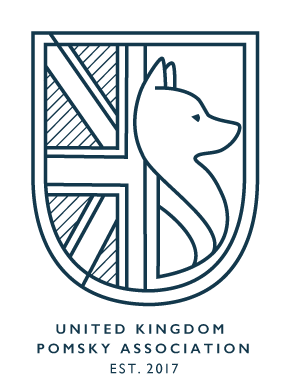
This standard serves as a guideline for the breeding and development of the Pomsky. It should be used to better select breeding stock for future generations so that the desired standard is more readily obtained in the offspring of subsequent generations. Early generations may conform loosely to this standard, it is written with the intention of acting as a guide to what the breed is aiming to become as it stabilises and breeds true.
This standard is written and owned by the United Kingdom Pomsky Association (UKPA) its reproduction or replication without permission is prohibited, unless it is for information purposes and education with citation given for its source.
General Appearance
Small powerful northern breed dog, with well furred body coat more profuse around neck, withers and hindquarters, erect ears and well furred and forward facing. Tail curls over back like a plume slightly proud of the body. Males are masculine slightly larger than bitches and more heavily set, bitches feminine but without weakness of structure. Muscle firm and well developed, no excess weight. Markings are striking and symmetrical.
Characteristics
Small to lower Medium size, moderate bone for size of dog, well balanced proportions, ease and freedom of movement, and good disposition. Well suited to a family environment with the ability to perform well at competitive dog sports. High train-ability and keenness to please good potential to serve as a service dog.
Temperament
Friendly but confident not aloof, intelligent and reward driven, keen to learn and please. Any sign of shy or aggressive temperament is a serious fault
Head & Skull
Medium size in proportion to the body. Slightly rounded on top. Muzzle is medium length approximately 1/3 of the skull length and broad in width, neither snipy nor coarse, tapering gradually to rounded nose. Stop clearly defined but not excessive, neither to steep nor too shallow. Line of the nose straight from the stop to tip. Nose should be black in all colours with exception to liver in chocolate dogs or in the case of dilute dogs a colour compatible with coat colour. In winter, pink-streaked ‘snow nose’ is acceptable. Snipy or fine muzzles should be faulted. Muzzles overly short are a serious fault.
Eyes
Almond shaped and set obliquely. All colours acceptable and should include one of each colour or Parti colour with no preference given to any colour or colour pattern in the eye. Expression is keen but friendly.
Ears
Small triangular and erect with rounded tips, forward facing. Well furred set high on head. Height should not overly exceed width on the inner edge. Overly tall ears are a fault.
Mouth
Jaws strong, with a perfect, regular and complete scissor bite, set square to the jaws. Lips well pigmented in a colour as compatible with coat colour. Under or overbites are serious faults
Neck
The neck is carried proudly erect, well set on, medium in length, and in a strong, graceful arch.
Forequarters
Shoulder blade well laid back, upper arm angles slightly backward from point of shoulder to elbow, never perpendicular to the ground. Muscle holding shoulder to rib cage firm and well-developed. Straight or loose shoulders highly undesirable. Viewed from the front, forelegs moderately spaced, parallel and straight with elbows close to the body, turning neither in nor out. Length from elbow to ground should be equal to the distance from elbows to top of withers. Bone proportionate, never heavy. Dewclaws may be removed
Body
The Top line is level. Body is strong and moderately compact but not cobby. Chest fairly deep, not too broad but in proportion to size of dog., deepest point being just behind and slightly above the elbows. Ribs well sprung. Loins slightly arched, well-muscled, taut and lean, narrower than rib cage with a slight tuck-up. Overly long bodies and short legs are a serious fault and should not be bred from.
Hindquarters
Hindlegs moderately spaced and parallel. Upper thighs well-muscled, stifles well bent, hock is noticeable, short and straight. Cow and sickle hocks are a serious fault.
Feet
Oval, compact and of medium size, turning neither in nor out in natural stance. Well furred and slightly webbed between toes. Trimming of fur between toes and around feet permissible.
Tail
Well furred, set on just below level of top line and sits curled over the back slightly proud of the body in a semi to 3/4 circle. When carried up, tail should not curl too tightly. Hair on tail of medium length and should be profuse on the underside with a slightly shorter length on the topside. When let down tail should reach the hock. Tails that sit flat to the back or curl to tightly are a serious fault.
Gait/Movement
Moving without exaggeration from any angle, smooth, free flowing and effortless. Good forequarter reach and good hindquarter drive. Top line of back remaining firm and level during gaiting.
Coat
Double coat made up of a soft and dense under coat, long enough to support the longer guard hairs, and an outer coat of guard hairs. Coat should be a plush to woolly length, soft to the touch. Profuse around neck, shoulders and hind-legs to the hock. Short on the face. Hair is straight never curled. Absence of undercoat during shedding normal. Coats that obscure the outline of the body are a fault. Extremely short double coat is a serious fault. This is not a trimmed breed only tidying of hair on feet or around the tail for neatness permissible.
Colour
All colours acceptable with the exception of Merle which is a fault. Irish markings preferred, but tan points and piebald acceptable. Solid white acceptable but not preferred, all other solid colours are a fault. A variety of striking markings appear on the head preferably in a symmetrical pattern.
Size
Bitches Weight - 7-12kgs Height 12-16 inches, Dogs 8-14kgs Height 14-18 inches *as the breed stabilises these will be amended and serve the purpose only to act as a guide in selecting breeding stock for future development.
Faults
Any departure from the foregoing points should be considered a fault and the seriousness with which the fault should be regarded should be in exact proportion to its degree and its effect upon the health and welfare of the dog and on the dog’s ability to perform its traditional work.
*Note
Male animals should have two apparently normal testicles fully descended into the scrotum
**Note
for prospective puppy buyers Size – the UKPA Breed Standard is a guide and description of the ideal for the breed, it is a guide that breeders should be aiming towards in their breeding; the Size as described does not imply that a dog will match the measurements given (height or weight) particularly in younger generations. A dog might be larger or smaller than the Size measurements stated in the Breed Standard. Most early generations will loosely conform to this standard, subsequent later generations should conform more closely to this standard in order for the breed to stabilise.
Meet the Committee
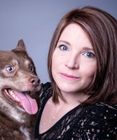
Joanne Brown
Chairperson
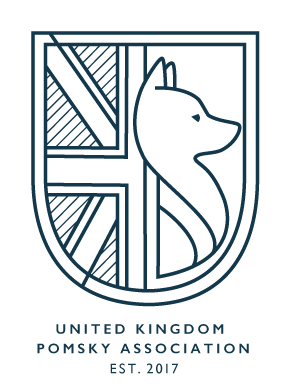
Clare Baker
Treasurer

Jessica Louise
